Editor’s Note: Community member Dylan McGill has submitted another guest article about the campaign side of Imperial Assault for your enjoyment. IACP is happy to host guest bloggers with any articles that are related to the Imperial Assault game. You can find Dylan and other community members actively discussing the game on the ZionsFinest Slack channel.
Be sure to also check out Dylan’s other campaign article about how to enhance your campaign experience.
Campaign Rebel Team Checklist
Although there are “Heroic” and “Legendary” rules meant to balance a three or two rebel player campaign, respectively, I recommend always having four rebel heroes in your campaign. In my campaign group, the rebel team tends to control their characters quite collaboratively despite the two players each picking two characters. Unless you are going for a total Star Wars version of DnD, having a mismatched number of characters to players is not an issue. Having four characters is important for flexibility, especially in missions where objectives are spread over the entire map. A character with two activations still can’t be two places at once.
When playtesting missions in a custom campaign that I am creating, I needed to come up with a quick way to create randomized yet balanced teams. I did this by having a team generator create teams of three from all of the possible rebel characters. I then looked at the three characters and asked, “what is missing?” Once I answered that question, I looked at the remaining characters to find one that filled the void. Obviously, some characters are better at each role than others. However, someone on your team should be able to fill each role when needed. Here is my checklist, example heroes for each role, and why each is important.
The Checklist
- Attribute tests
- Strength
- Insight
- Tech
- Support
- Mobile
- Crowd Control
- Attack Types
- Ranged
- Melee
Attribute Tests
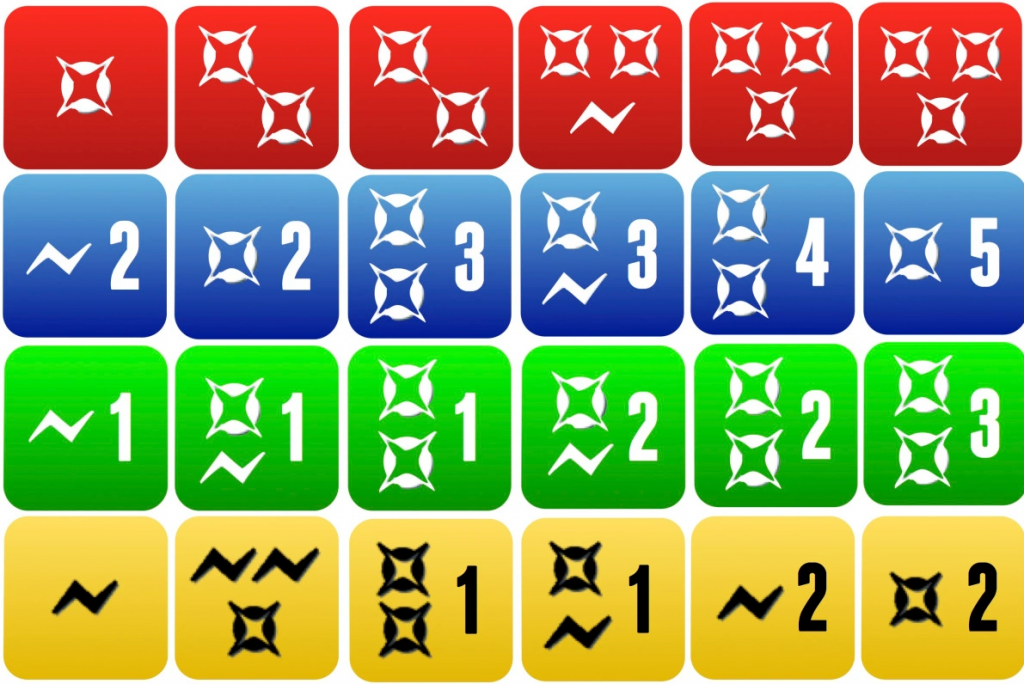
The first entries of the checklist are to have someone you can rely on for each attribute test. Many objectives and/or mission rules will involve an attribute test and you do not want to be wasting actions on failed attribute tests. The average attribute competence is a blue die and a green die. Characters like Verena Talos and Fenn Signis roll blue and green for all three attribute tests. Most characters (especially in the early waves of the game) have a strong trait, rolling a blue, a green, and a yellow along with a weaker trait where they roll one blue or green die. Stand out attribute test characters include Onar Koma, who not only rolls a blue and two yellow dice for strength tests, but has the “Brute Strength” class card allowing him to use his strength dice pool for all attribute tests, on top of potentially performing the interaction for free! Mak Eshka’rey also comes to mind having no weak trait along with his “Expertise” class card, guaranteeing a free interact action at the cost of a strain.
Support
Having a support character is important for a number of reasons. Throughout a campaign, you will rely on each of your characters at different times. A support character is your flexible way to buff up whoever you need to once you are in the mission. It is usually late in the mission when you realize one of your characters is the only chance of winning, but they need a few more movement points, another attack, or even to recover a couple of strain to guarantee or even have a chance at victory. The other benefit of a support character is that rather than needing to equip all 4 characters with good weapons and items, you can save your credits and spend them on a great weapon or item for another character which you get extra use out of through your support abilities. Classic support characters include Murne Rin, Saska Teft, MHD-19, and, the arguably overpowered, Gideon Argus. Almost all of these characters’ abilities involve giving positive effects to other figures.
There are also a number of characters who can fill the support role, who I refer to as support-lite. These characters either give out small buffs and bonuses to their teammates, or need to be intentionally built using their class cards to become support figures. This includes characters like Diala Passil, Onar Koma, Ko-tun Feralo, Loku Kanoloa, and CT-1701. These characters are more likely to use their own attacks than the previously mentioned classic support characters.
Mobile
Luckily, I often play in a group of three, two Rebels and one Imperial. This is because each rebel player will pick two characters and it is almost guaranteed that one of mine will fill this role. Mobile characters tend to have a speed of 5 instead of 4 and/or abilities that give them extra movement throughout the round. These characters will often be objective runners, or the slippery character that prevents the Imperials from wounding everyone. Their mobility often leads to more easily set up attacks and efficient use of their activations as they consistently are able to attack enemies on their way towards objectives. This includes Jyn Odan, Vinto Hreeda, Verena Talos, Davith Elso, Shyla Varad, Jarrod Kelvin, and Tress Hacnua. The OG mobile figure is Jyn who can move a space (or three with “Sidewinder”) after resolving an attack that does damage, as well as a space after being attacked with “Quick as a Whip”. Other notable characters for this role are Davith and Tress whose abilities grant them moving a number of spaces rather than movement points. This keeps difficult terrain and hostile figures from slowing them down.
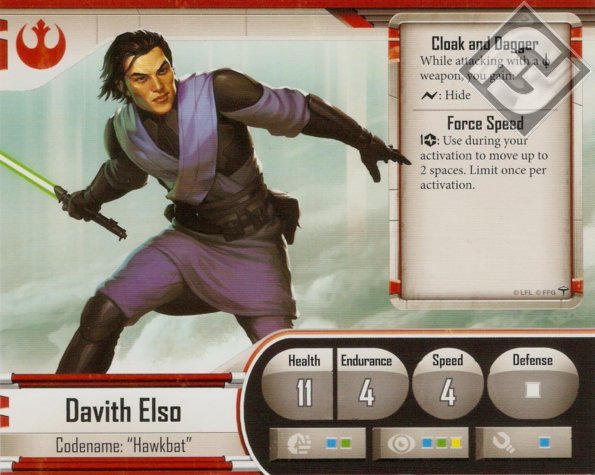
Crowd Control
As I’m sure you could guess, you will encounter many groups of Stormtroopers and other three figure groups in any campaign. In order to cut down the number of activations and figures that the Imperial player has to control, you will want someone to start the round by removing multiple figures in their activation. Blast or Cleave are very helpful in dealing with groups that have just deployed and are therefore clumped together, making Fenn, Gaarkhan and Drokkatta obvious members of this category. Other abilities that lend themselves to crowd control are abilities that allow the hero to easily set up multiple attacks per round. Aside from Gaarkhan with his charge, characters like Jyn and Verena who can trigger attacks outside of their activation can quickly disrupt the Imperial player’s plans. Other characters that are able to spread their damage around include CT-1701 and Vinto, whose unblockable damage distribution is easiest to control with a combination of starting abilities that allow him to throw a damage within three spaces and line of sight even if they are body blocked with other figures.
Blast & Cleave
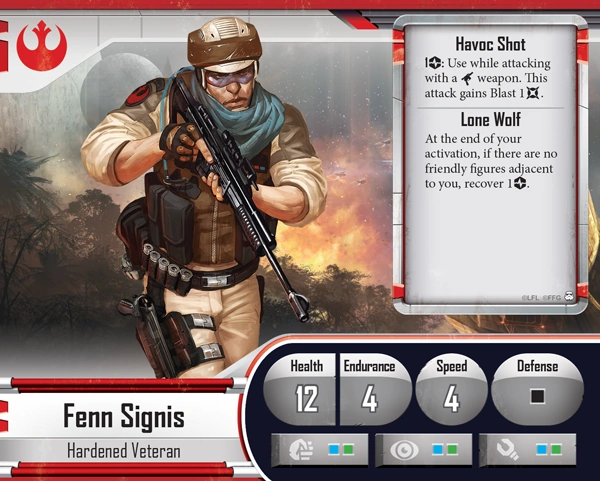
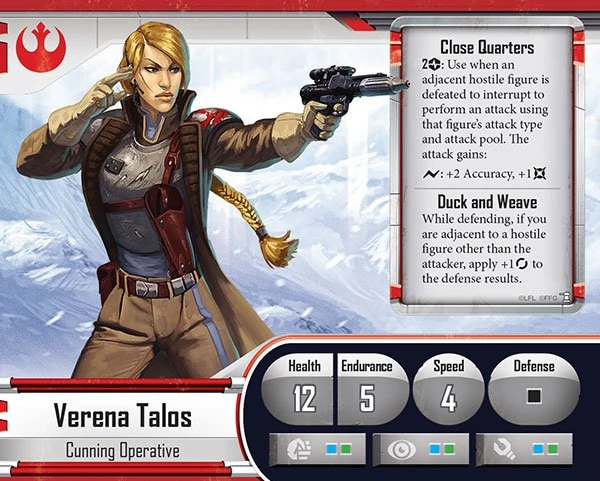

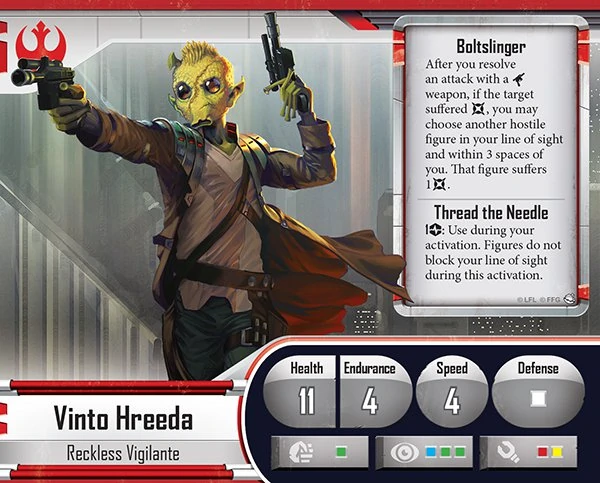
Attack Types
The only hero who comes with two starting weapons, one ranged and one melee, is Verena Talos. Other than her, the starting weapon of each hero usually reflects the best weapon type to equip them. During each rebel upgrade phase, a number of items are randomly drawn from the specified tier(s). These drawn items are then available to spend your credits, arming your team with better equipment. Given this system, it is often a good idea to have ranged and melee attackers. If you don’t have any melee attackers, the items that are melee specific will automatically become useless cards taking up space in the drawn pool of cards available. Also, if all of your teammates are ranged attackers, it can be difficult to arm them all with appropriate weapons as starting weapons will not serve you well in the finale.
With all of these categories considered and roles filled, you should have a well rounded team to take on any mission a campaign throws at you!
Editor: Thanks Dylan, that was awesome!
